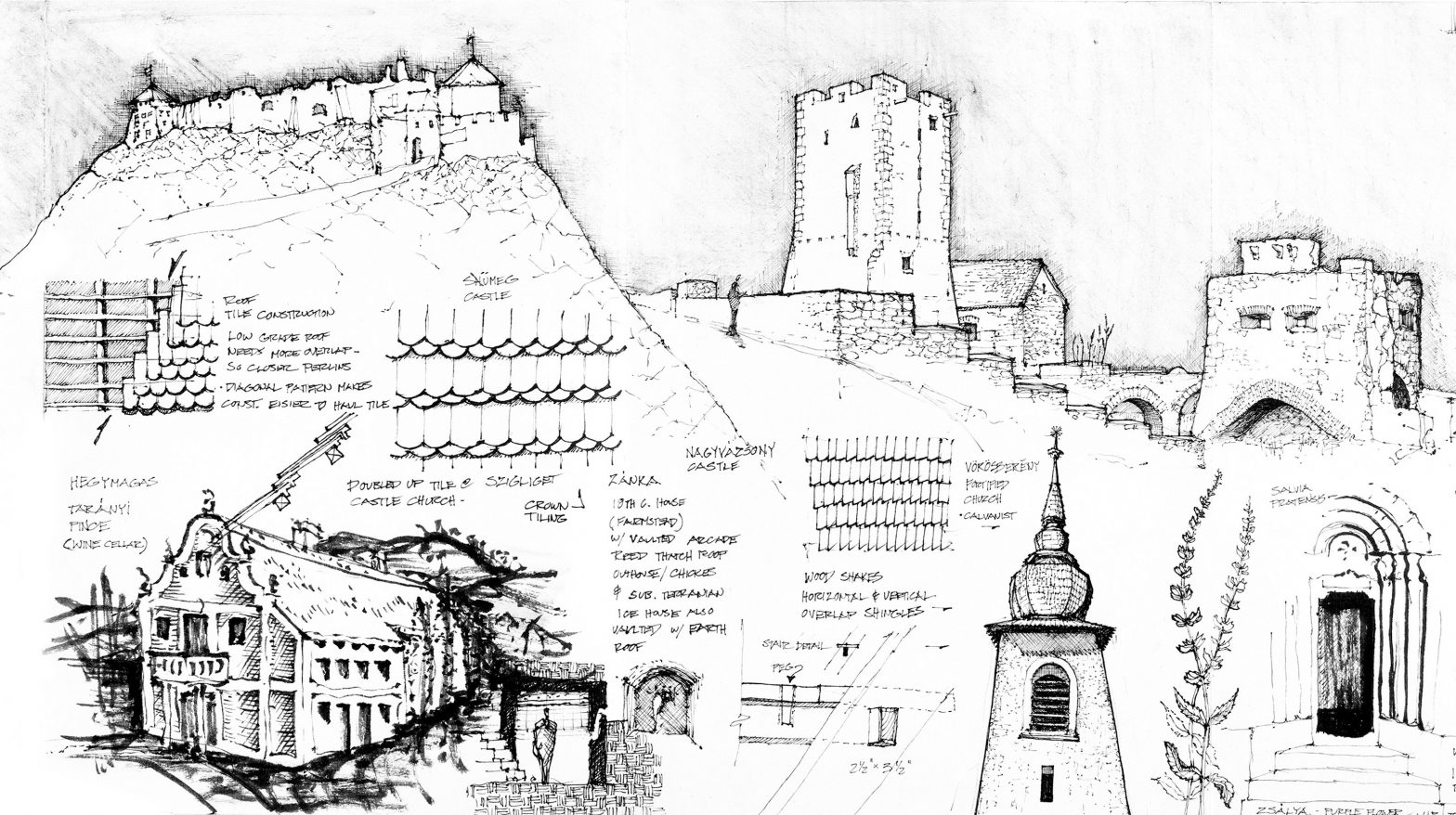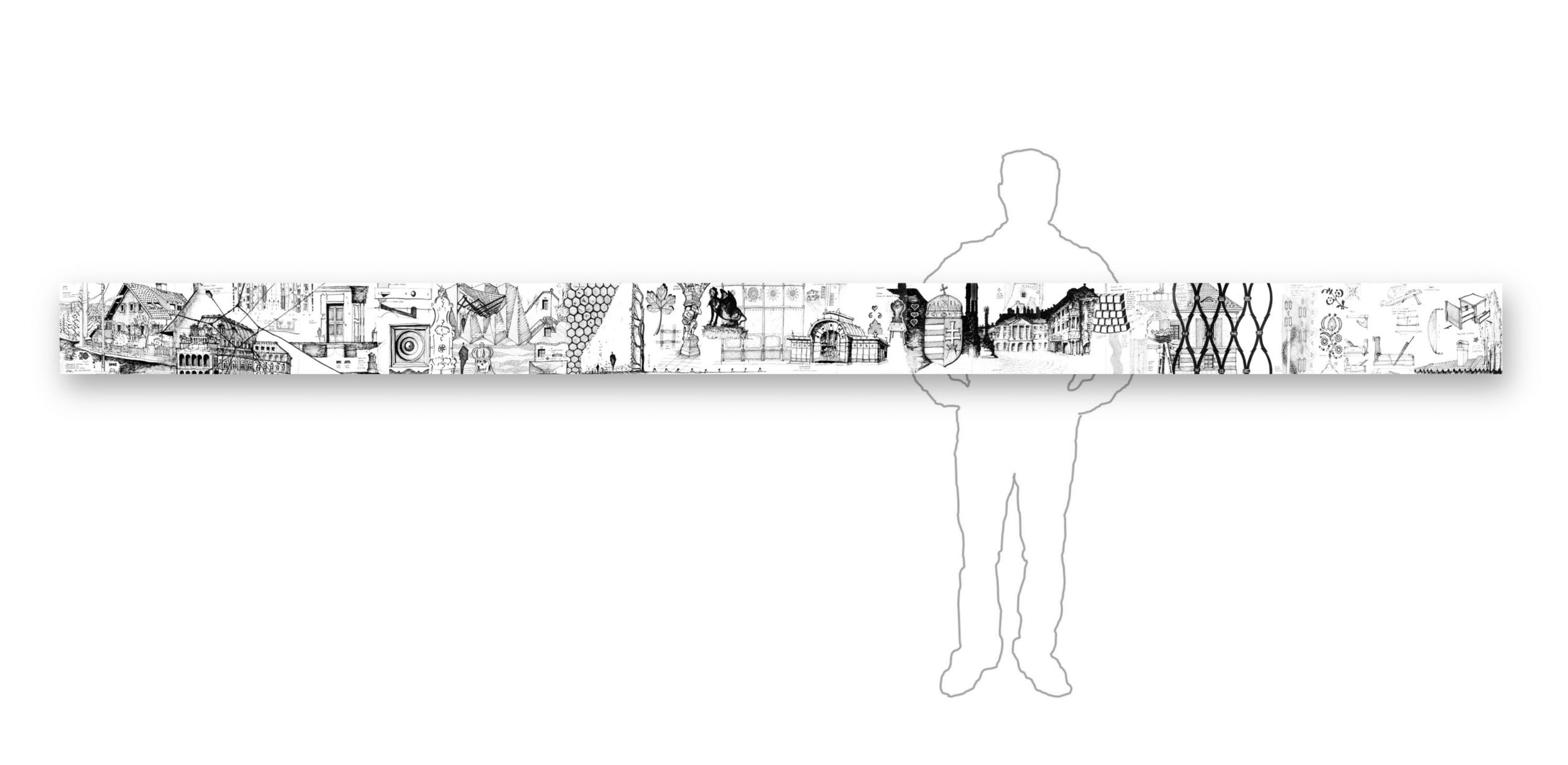6.17.Hungary-2-detail-g Highlights Relevant to Sustainable Design:
We can learn about saving waste and energy on building envelopes from roof systems. Roof tile patterns range from single to double layers and from curved to straight cuts. All are terracotta red. Unlike the Japanese tiles, they are also flat and overlap much more of the individual length. Long-lasting tiles prevent the disposal waste of asphalt shingles in landfills. If the asphalt shingles are recycled, the environmental impact is still higher than the clay tiles, because of the energy cost to transport asphalt to the recycling plant, the energy of the processing and remanufacturing, and the energy used to ship them to supply houses and then to the final construction site. The roof tiles that are made from waste materials from the start, referenced in Hungary 2: Detail (c), could be engineered for even longer life as well as future recycling “cradle to cradle” instead of cradle to grave.
This sketch also includes drawings of castles, an onion-like top to a church tower, and fortifications that look something like a hungry face.
Author and illustrator: Charlie Szoradi is an architect, inventor, and the CEO of Independence LED Lighting. He writes about many other topics related to roofing and roof tile patterns through his extensive travels around the world.
If you have found this posting online, it is an excerpt from Mr. Szoradi’s book Learn from Looking that served as the inspiring seed content for this drawing share resource. For additional drawings and insights on roof tile and other construction systems, we hope that you enjoy exploring LearnfromLooking.com. You can search via general terms such as sustainability as well as narrower terms such as roof tile and other building materials.



